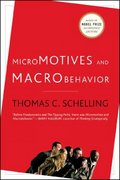Question
Vietnam's Emerging Market Potential Around 30 years ago, Vietnam's government first introduced doi moi. This renewal policy initiated free-market reforms while preserving a communist political
Vietnam's Emerging Market Potential
Around 30 years ago, Vietnam's government first introduced doi moi. This "renewal" policy initiated free-market reforms while preserving a communist political system. In 1990. Vietnam's communist government announced that non-Vietnamese manufacturers were welcome to set up shop in the Southeast Asian country. South Korea's Daewoo (www.dm.co.kr) quickly established itself as the number-one investor in Vietnam. Other well-known companies, including Toshiba (www.toshiba.co.jp) Peugeot (www.peuing.com) and British Petroleum (www.bp.com) also took Hanoi up on its invitation.
The absence of trade and diplomatic relations between the United States are doubling United States and Vietnam, however, meant that U.S. companies had to sit on the sidelines. Nearly four years later, the U.S. government lifted the trade embargo with Vietnam, paving the way for a host of U.S. companies to pursue opportunities there. Vietnam's location in the heart of Asia and the presence of a literate, low-wage workforce are powerful magnets for international companies.
Early on, Vietnam's Communist Party struggled to adapt to the principles of a market economy, and the layers of bureaucracy built up over decades of communist rule slowed the pace of change. Despite the efforts of the State Committee for Cooperation and Investment, the government sometimes still conducts itself in a way that leaves international investors scratching their heads. In one incident, Hanoi embarked on a "social evils crackdown" that included pulling down or painting over any sign or billboard printed in a language other than Vietnamese. And laws concerning taxes and foreign exchange are in constant flux.
Yet an emerging entrepreneurial class in Vietnam has devel- oped a taste for expensive products such as Nikon (www.nikon .co.jp) cameras and Ray-Ban (www.ray-ban.com) sunglasses-both of which are available in stores. But if official economic statistics tell us that many Vietnamese are poor, where does the money come from to afford such luxury items? The answer is found in the large unofficial economy. It is typical for a person to live only 5 or 10 chasing power coming from moonlighting activities and business conducted in the informal economy. days a month on their official salary, with the majority of their purchasing power coming from moonlighting activities and business conducted in the informal economy.
In late 2001, Vietnam and the United States signed a trade deal that gave Vietnam normal trade status with the United States. This meant that Vietnam could ship goods to the US market at the lowest possible tariff rates. Meanwhile, US companies are gainng continually greater access to Vietnam. As a result, Vietnam's export activity (worth around $170 billion in 2016) is booming, due largely to its cheap, efficient workforce and growing foreign investment. Vietnam's exports to the United States are doubling each year. The diversified nature of the country's exports-including commodities, agricultural products, and manufactured goods means it is somewhat immune to large swings in the price of any one export. Vietnam is now the world's largest exporter of pepper it may soon overtake Thailand in rice exports, and it even exports tea to India.
Vietnam has become one of Asia's best-performing economies. Over the past decade, Vietnam grew nearly 8 percent a year. Manufacturing makes up more than a third of the nation's $200 billion economy and is a regional hub for companies like Samsung. In fact, Samsung is Vietnam's biggest exporter, accounting for around 20 percent of all exports. But this means Vietnam's fortunes are tied to those of leading multinationals. When Samsung ended production of its troubled Galaxy Note 7 smartphone electronics exports fell by more than 10 percent.
Vietnam's infrastructure is underdeveloped. Only 25 percent of roads are paved and electricity sources can be unreliable. The population of around 82 million has an annual per capita income (at purchasing power parity) of only about $2,900. Still, the nation's trade-driven economy has lifted many Vietnamese out of poverty. Whereas the World Bank labeled as much as 70 percent of the population poor in the 1980s, that number was less than 18 percent in 2017.
Q: "Multinational investment can be nothing but good for a country such as Vietnam seeking to grow and prosper". Do you agree or disagree with this statement? Explain. Your answer should be based on insights from this case study
Step by Step Solution
There are 3 Steps involved in it
Step: 1

Get Instant Access to Expert-Tailored Solutions
See step-by-step solutions with expert insights and AI powered tools for academic success
Step: 2

Step: 3

Ace Your Homework with AI
Get the answers you need in no time with our AI-driven, step-by-step assistance
Get Started


